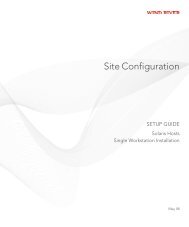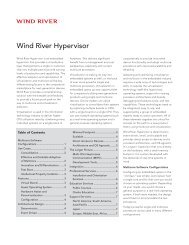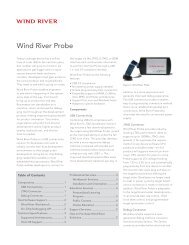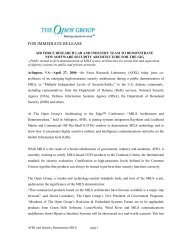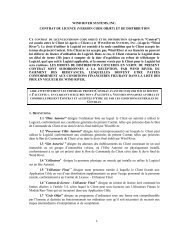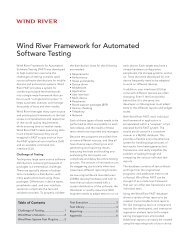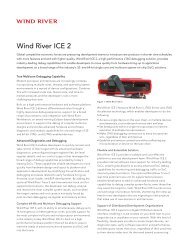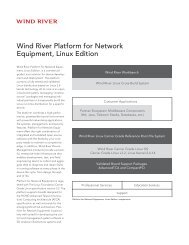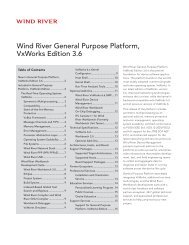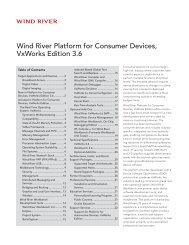6WINDGate™ - Architecture Overview - NE 6W-08-188 ... - Wind River
6WINDGate™ - Architecture Overview - NE 6W-08-188 ... - Wind River
6WINDGate™ - Architecture Overview - NE 6W-08-188 ... - Wind River
You also want an ePaper? Increase the reach of your titles
YUMPU automatically turns print PDFs into web optimized ePapers that Google loves.
<strong>6W</strong>INDGate - <strong>Architecture</strong> <strong>Overview</strong> <strong>NE</strong> <strong>6W</strong>-<strong>08</strong>-<strong>188</strong> v1.0<br />
Figure 2: Multi-Core Technology<br />
Model v1.1<br />
Page 7<br />
Currently, the number of cores can reach 16 but it is likely that this number will grow up to several<br />
hundreds of cores in the future thanks to micro-electronics improvements. These cores are<br />
interconnected through ad hoc communication hardware such as message rings or switching fabrics to be<br />
able to handle parallel processing and exchange information between cores.<br />
According to different implementation strategies, MC can run a single or several threads on a core.<br />
Moreover, MC implements built-in specific hardware to speed up information processing such as network<br />
interfaces, crypto-processors, pattern matching processors, or dedicated queues for efficient QoS<br />
management.<br />
MC architecture is by essence scalable as larger configurations can be built by interconnecting several MC<br />
CPUs.<br />
The way cores can be used is very flexible. Several execution environments possibly relying on different<br />
Operating Systems can coexist on different cores of the same MC using virtualization concept. For optimal<br />
performance, some MC providers also provide a low-level executive environment (MCEE: Multi-Core<br />
Execution Environment) to optimise performance.<br />
As the core is based on a standard processor (MIPS, PowerPC, ARM…), programming models are far<br />
simpler compared to the previous generation of micro-coded architectures.<br />
2.4 MULTI-CORE PROCESSOR TECHNOLOGY FOR <strong>NE</strong>TWORKING<br />
MC technology can address many applications. Networking and telecoms markets are early adopters as<br />
they can benefit from significant improvements brought by MC technology to design efficient software<br />
architecture for network equipment:<br />
• MC architecture allows a flexible distribution of cores between Data Plane and Control Plane and<br />
the coexistence of different execution environments (one for Fast Path, one for Slow Path and<br />
Control Plane for instance) on a single chip. A typical use of MC technology for network<br />
equipment, for instance on a 16-core processor, is to use several cores to implement an efficient<br />
Fast Path under MCEE, while the remaining number of cores are dedicated to Linux environment<br />
implementing Slow Path (IP stack) and Control Plane. The different functions are co-localized,<br />
meaning on the same MC chip, but distributed over the different cores.<br />
_________________________________________________________________________________________________________________<br />
<strong>6W</strong>IND Confidential. <strong>6W</strong>IND copyright 20<strong>08</strong>. All rights reserved. This document cannot be reproduced without <strong>6W</strong>IND written consent.






